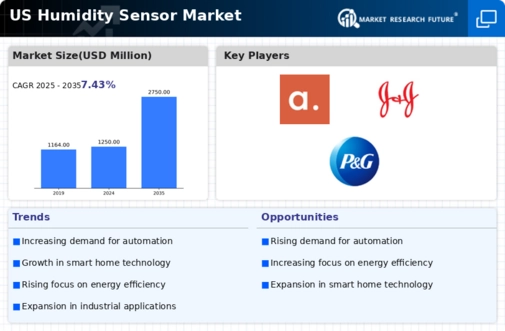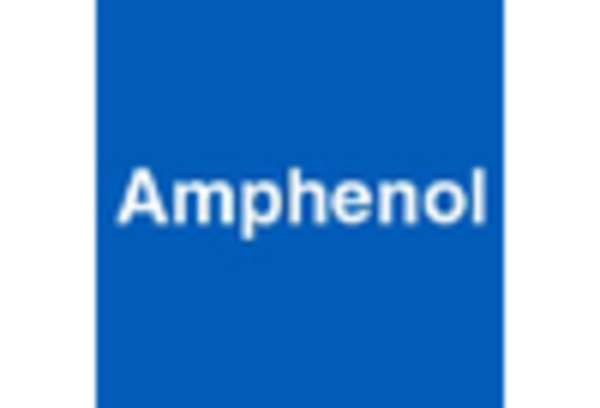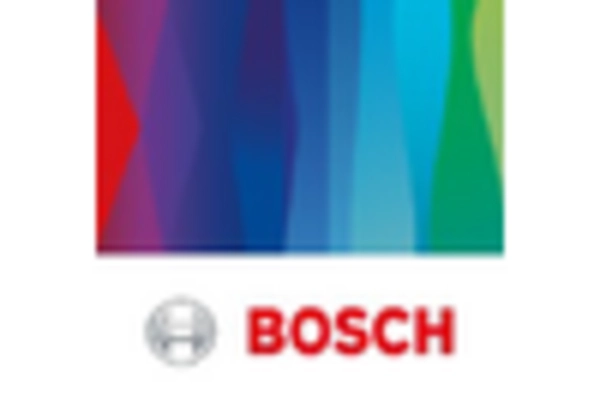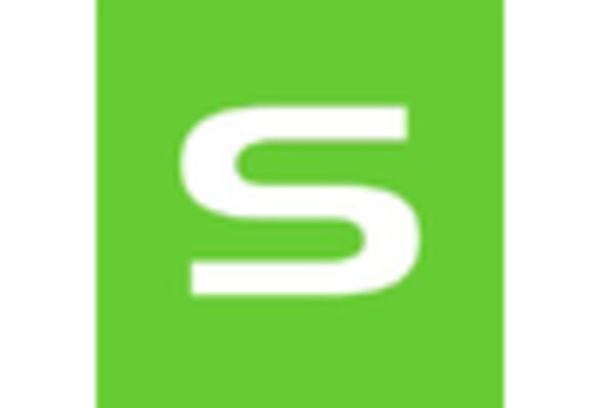Rising Demand in HVAC Systems
The increasing demand for efficient heating, ventilation, and air conditioning (HVAC) systems is a primary driver for the humidity sensor market. As consumers and businesses seek to optimize energy consumption, humidity sensors play a crucial role in maintaining ideal indoor climates. The HVAC sector is projected to grow at a CAGR of approximately 5.5% through 2027, indicating a robust market for humidity sensors. These devices help in regulating humidity levels, thereby enhancing comfort and reducing energy costs. Furthermore, the integration of humidity sensors in smart HVAC systems allows for real-time monitoring and adjustments, which is essential for energy efficiency. This trend underscores the importance of humidity sensors in the HVAC industry, as they contribute to improved air quality and energy savings, making them indispensable in modern building management.
Growth in Agricultural Applications
The growth in agricultural applications is a significant driver for the humidity sensor market. As precision agriculture gains traction, farmers are increasingly utilizing humidity sensors to optimize irrigation and crop management. These sensors provide real-time data on soil moisture and atmospheric humidity, enabling farmers to make informed decisions that enhance yield and resource efficiency. The agricultural technology market is projected to reach $22 billion by 2027, with humidity sensors playing a pivotal role in this transformation. By facilitating better water management and reducing waste, humidity sensors contribute to sustainable farming practices. This trend suggests that the humidity sensor market will continue to expand as agricultural stakeholders recognize the benefits of integrating advanced sensor technologies into their operations.
Increased Awareness of Indoor Air Quality
There is a growing awareness regarding the importance of indoor air quality (IAQ), which significantly impacts the humidity sensor market. As health concerns related to poor IAQ become more prevalent, consumers and businesses are increasingly investing in technologies that monitor and improve air quality. Humidity sensors are vital in this context, as they help maintain optimal humidity levels, which can prevent mold growth and enhance overall health. The market for IAQ solutions is expected to reach $10 billion by 2026, with humidity sensors being a key component. This heightened focus on IAQ drives demand for humidity sensors across various sectors, including residential, commercial, and industrial applications. Consequently, the humidity sensor market is likely to benefit from this trend, as more stakeholders recognize the need for effective humidity management in their environments.
Technological Advancements in Sensor Design
Technological advancements in sensor design are propelling the humidity sensor market forward. Innovations such as miniaturization, improved accuracy, and enhanced response times are making humidity sensors more effective and user-friendly. The introduction of digital humidity sensors, which offer superior performance and connectivity options, is particularly noteworthy. These advancements are expected to drive market growth, as industries increasingly adopt sophisticated monitoring solutions. The humidity sensor market is projected to grow at a CAGR of 6% from 2025 to 2030, reflecting the impact of these technological improvements. Additionally, the integration of humidity sensors with IoT devices allows for seamless data collection and analysis, further enhancing their utility in various applications. This trend indicates a shift towards smarter, more efficient humidity management solutions, positioning humidity sensors as essential tools in modern technology.
Regulatory Standards for Environmental Control
Regulatory standards aimed at improving environmental control are influencing the humidity sensor market. Various government agencies have established guidelines to ensure optimal humidity levels in commercial and residential buildings, particularly in sectors such as healthcare and food storage. Compliance with these regulations necessitates the use of reliable humidity sensors, which can monitor and maintain appropriate humidity levels. As regulations become more stringent, the demand for high-quality humidity sensors is expected to rise. The market is likely to see an increase in the adoption of sensors that meet these regulatory requirements, thereby driving growth. This trend highlights the critical role of humidity sensors in ensuring compliance with environmental standards, making them indispensable in various industries that prioritize health and safety.
















Leave a Comment